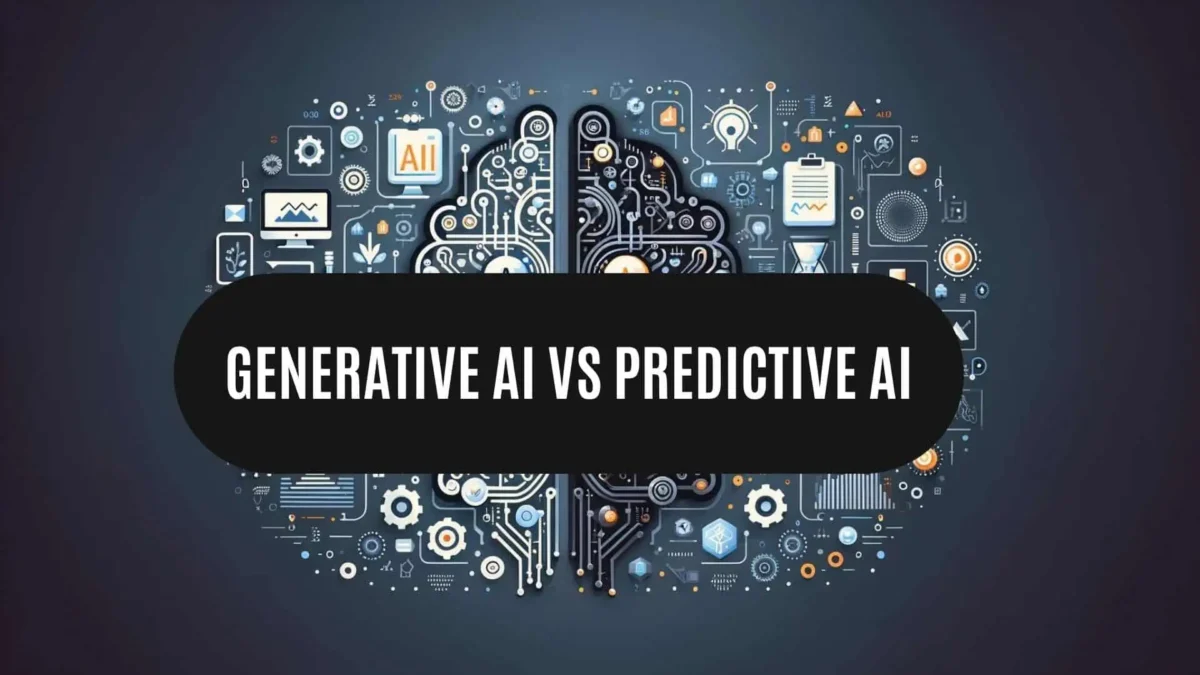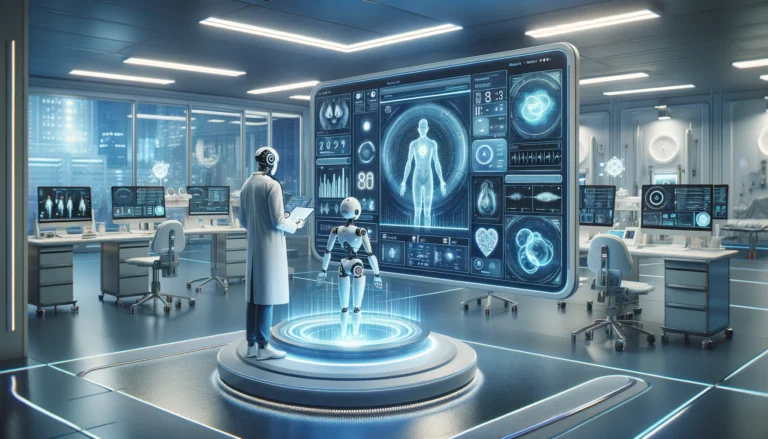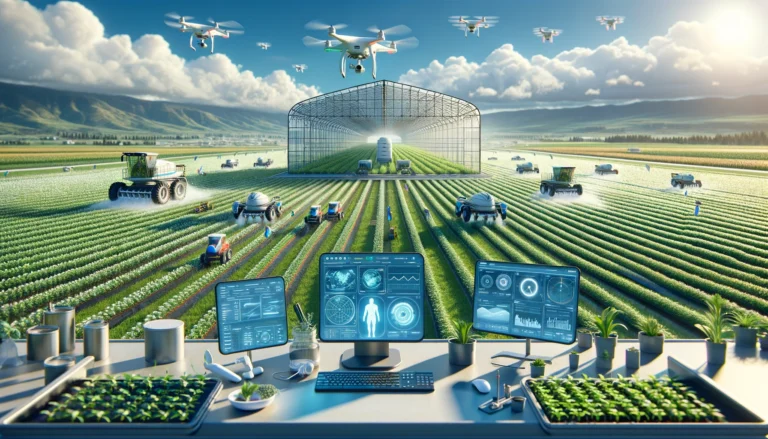Generative AI vs Predictive AI Comparison
Artificial intelligence (AI) is a broad and diverse field that encompasses many subdomains, each with its own goals, methods, and applications. Among these subdomains, two of the most prominent and promising ones are generative AI and predictive AI. These two types of AI have different but complementary roles in creating and analyzing data, enabling new possibilities for innovation and insight.

In this article, we will compare and contrast generative AI vs predictive AI, highlighting their key differences, strengths, weaknesses, and applications. We will also explore how these two types of AI can work together to create synergies and benefits for various domains and industries.
By the end of this article, you will have a better understanding of what generative AI and predictive AI are, what they can do, and how they can help you achieve your goals.
Consider reading: Future of AI in Education
Key Takeaways from Generative AI vs Predictive AI
- Generative AI focuses on creating new content while predictive AI excels at forecasting outcomes based on historical data.
- Generative AI utilizes deep learning and neural networks for content generation, while predictive AI uses techniques like regression and clustering for predictions.
- Generative AI emphasizes innovation and creativity, offering unique content creation, while predictive AI focuses on identifying data patterns for precise forecasts.
- Understanding the differences between generative AI and predictive AI is crucial for businesses to harness AI effectively in their operations.
- Generative AI applications include content generation, design innovation, personalized recommendations, data augmentation, virtual assistant development, and creative writing assistance.
- Predictive AI aids in enhanced decision-making, risk mitigation, and forecasting trends in industries like healthcare, marketing, and finance.
Key differences between Predictive AI and Generative AI
When comparing predictive AI and generative AI, it’s crucial to grasp their distinctive features to make informed decisions for AI implementation:
Purpose:
- Generative AI: Focuses on creating new content like text, images, and music. It’s versatile, serving tasks from data translation to marketing material generation.
- Predictive AI: Primarily aimed at making predictions, recommendations, and decisions based on data patterns and trends.
Techniques:
- Generative AI: Utilizes deep learning and neural networks to generate new content by learning from existing data.
- Predictive AI: Employs diverse AI and machine learning techniques such as regression, classification, and clustering to analyze data for predictions and recommendations.
Output:
- Generative AI: Emphasis on novel content creation, providing innovation and sparking creativity.
- Predictive AI: Focuses on identifying patterns in data to provide precise forecasts for upcoming events.
Understanding these differences between generative AI and predictive AI is crucial for businesses aiming to leverage AI effectively in their operations.
What is Generative AI and how does it work?
Generative AI is a subset of artificial intelligence that focuses on creating diverse content such as text, images, and music. It operates through complex algorithms based on generative design principles. Here’s how it works:
- Algorithms: Generative AI utilizes advanced algorithms driven by deep learning and neural networks to generate original content.
- Content Creation: It excels in producing diverse content by understanding patterns and creating variations without explicit instructions.
- Innovation and Creativity: By analyzing vast datasets, generative AI can foster innovation and creativity by providing unique and novel outputs.
- Ideation Facilitation: When prompted with queries, generative AI can offer innovative suggestions to help the brainstorming and ideation processes.
- Synthesis of New Data: Generative AI has the capability to synthesize new data, offering users innovative insights and suggestions.
- Gap Filling: Particularly useful in scenarios with missing data, generative AI can fill in gaps or incomplete records, aiding in data completion.
Generative AI’s ability to create diverse and innovative content sets it apart from predictive AI, making it a valuable tool for various industries and applications.
Consider reading: Artificial Intelligence in Agriculture
Generative AI Use Cases
In the area of Generative AI, its applications are diverse and impactful. Here are some key use cases that highlight the potential and versatility of this innovative technology:
- Content Generation: Creating unique content such as text, images, videos, code, and music.
- Innovation in Design: Enhancing creativity in fields like graphic design, architecture, and product development.
- Personalized Recommendations: Offering tailored suggestions for movies, music, products, and services.
- Data Augmentation: Generating synthetic data to enhance training sets for machine learning models.
- Virtual Assistant Development: Constructing chatbots and virtual assistants with more human-like interactions.
- Creative Writing Assistance: Assisting authors, journalists, and content creators in coming up with ideas and drafting content.
These use cases demonstrate the wide-reaching potential of generative AI in driving creativity, innovation, and efficiency across various industries and applications.
Benefits of Generative AI
- Content Creation Boost: Generative AI aids in speeding up the content creation process by helping professionals overcome creative hurdles.
- Data Synthesis: This technology synthesizes new data and provides innovative suggestions to help the ideation process.
- Efficient Data Analysis: Generative AI excels in sifting through vast information and offering concise summaries or insights.
- Bridging Data Gaps: It can fill in missing data, especially useful in data sets with gaps or incomplete records like in image generation.
Limitations of Generative AI
Generative AI, even though its many benefits, also comes with limitations that need to be acknowledged. Here are some key points to consider:
- Bias: Generative AI models can reflect biases found in the data they’re trained on, leading to potentially unfair outcomes.
- Lack of control: It can be challenging to control the outputs of generative AI models, which may result in unintended consequences like the creation of fake news or deepfakes.
- Limited understanding: Generative AI models lack a deep understanding of the world, which can restrict their ability to generate truly innovative and creative content.
These limitations underscore the importance of ongoing research and development to address these challenges effectively.
Generative AI applications in business
Generative AI offers diverse applications in the business world, revolutionizing various sectors with its creative capabilities. Here are key ways generative AI is transforming the business world:
- Content Creation: Generative AI plays a crucial role in aiding creatives and marketers by producing a wide range of content such as blog posts, ad creatives, videos, images, and audio. This technology assists in creating engaging and personalized content at scale.
- Customer Support: Businesses use generative AI models to train chatbots for customer support tasks. These AI applications connect to internal data, enabling chatbots to respond effectively to customer queries and provide detailed product information.
- Drug Discovery: In the pharmaceutical industry, generative AI accelerates the discovery of new molecules for drug research. By swiftly identifying potential drug candidates, this technology significantly expedites the drug development process.
- Product Design: Generative AI tools are instrumental in product design processes, allowing designers to transform conceptual ideas into functional prototypes rapidly. Through platforms like Vizcom, designers can streamline product development and enhance innovation.
- Personalization: Generative AI facilitates personalized marketing strategies by generating tailored content based on individual preferences and behaviors. This level of customization enhances customer engagement and drives conversions.
Incorporating generative AI into business operations can unlock a myriad of opportunities for innovation, efficiency, and customer satisfaction, propelling organizations towards competitive advantage in an increasingly digital world.
Consider reading: Artificial Intelligence in Healthcare
What is Predictive AI and how does it work?
Predictive AI is a technology-based solution that uses data analysis and historical patterns to predict what lies ahead. The method of drawing logical conclusions from data points has now diversified into a mainstream approach for various industries in guiding decision-making through information.
Major Functions of Predictive AI:
Predictive AI: Data Analysis: Driven at its core by the need to inform smart predictions, Predictive AI crunches the numbers and patterns of past data. Such a base provides it with the ability to make accurate and highly pragmatic forecasts.
Prediction of Trends in Various Industries with the Help of Predictive AI: Being driven at heart by the need to inform smart prediction, predictive AI allows predicting trends and eventualities based on past data in relation to various industries. This becomes beneficial with the strategic plan regarding competitiveness of markets.
A Critical Tool for Improvement in Decision-Making: In careers and industries that work on the data strategies, predictive AI happens to be a critical tool that is responsible for assisting them in making choices. The right kind of predictions made gives individuals the way to make rational decisions, which increases operational efficiency and effectiveness.
Various Applications of Predictive AI in Different Areas:
Basically, predictive AI is widely applied under areas of operation and have practical definitions of the ways in which operations are done and managed. In health care, it has been fundamental in predicting diseases and speeding up the process of drug discovery.
This provides better care and solutions for patients. Such data is crucial to refining marketing strategies and aiding in the trend prediction of the markets, which then helps to increase consumer engagements.
It will allow one particular industry to know how they can exploit Predictive AI and, in the future, enable the industry to come up with better predictive trends, making decisions and innovating from insights created from data.
Predictive AI Use Cases
Predictive AI analyzes past data to forecast trends:
- Valuable for data-driven decision-making in various industries.
- Aids in disease diagnosis and drug research in healthcare.
- Facilitates targeted marketing content creation.
- Essential for market trend analysis.
Predictive AI is a key player in leveraging AI technologies to enhance business strategies.
Benefits of Predictive AI
- Enhanced Decision-Making: Predictive AI provides data-driven insights for anticipating future trends or outcomes, aiding in decision-making processes. Retailers use it to optimize stock and reduce unsold inventory.
- Risk Mitigation: Companies leverage predictive AI to forecast potential scenarios, enabling proactive decision-making. Insurance firms use predictive models to assess risks and set appropriate premiums.
| Benefit | Description |
|---|---|
| Enhanced Decision-Making | Predictive AI offers data-driven insights to anticipate trends and outcomes, aiding in decision-making processes. |
| Risk Mitigation | Companies use predictive AI to forecast scenarios and make proactive decisions, especially in risk assessment and premium setting by insurance companies. |
Limitations of Predictive AI
Predictive AI, while valuable for forecasting, is not without its limitations. Here are some key constraints to be aware of:
- Reliance on existing data: Predictive AI heavily depends on historical data, potentially hindering its ability to predict unforeseen events or changes.
- Inability to predict anomalies: The technology may struggle to anticipate rare or unexpected occurrences that deviate from the patterns in the data it analyzes.
- Limited by the quality of data: The effectiveness of Predictive AI is inherently tied to the quality and quantity of the data it receives, impacting the accuracy of its predictions.
- Potential bias in data: If the historical data used is biased or incomplete, Predictive AI’s forecasts may also exhibit biases or inaccuracies.
- Lack of context understanding: Predictive AI operates based on patterns and trends in data, but may struggle to grasp nuanced contextual information that could influence outcomes.
Overall, while Predictive AI is a powerful tool for making informed decisions based on data analysis, it is essential to recognize and address these limitations to optimize its use effectively.
Predictive AI applications in business
When it comes to Predictive AI applications in business, the impact is profound. Let’s investigate into the key areas where Predictive AI excels:
- Enhanced Decision Making: By providing insightful forecasts, Predictive AI enables businesses to make informed decisions, plan strategies, and predict trends with confidence.
- Risk Reduction: Predictive AI helps anticipate potential issues before they arise, alerting businesses to risks and allowing them to take proactive steps to mitigate them. This is especially beneficial in financial services for credit scoring and fraud detection.
- Optimized Operations: From predicting maintenance needs in machinery to foreseeing equipment failures, Predictive AI streamlines operations. This results in less downtime and more efficient resource utilization.
- Personalization: In marketing, Predictive AI is instrumental in analyzing customer data to personalize experiences. By recommending products and services tailored to individual preferences, it boosts customer satisfaction and loyalty.
Final Thoughts on Generative AI vs Predictive AI
For sure, with the help of predictive AI, business processes change – it is so powerful to predict, mitigate risk, optimize the processing, and personalize approaches in marketing all in one technology.
But as we are diving deeper into the universe of Generative AI, an entire new region of possibilities gets opened up. Generative AI that can create absolutely new content, design, or a solution that redefines innovation.
The first one is strong in giving insights from data, the second one opens new doors of creativity and originality. The extremely rapid rise of these two AI methods in the past few years creates great promise for AI-driven solutions that lie ahead.
As companies envision their future with AI augmentation, a growing body of predictive and generative AI work in sync to mark the advent of a new era of intelligent technologies.
FAQs on Generative AI vs Predictive AI
What is the difference between generative AI and general AI?
Generative AI and general AI differ in function. General AI seeks to understand and perform any intellectual task that a human can, whereas generative AI creates new, original content or data after learning from existing examples. This innovation enables generative AI to mimic human-like creativity, unlike general AI’s broader approach to mimicking overall human intelligence.
Can generative AI do prediction?
Yes, generative AI is adept at making predictions. It processes historical data, identifies patterns, and constructs predictive models. These AI-driven forecasts can significantly aid in anticipating business results like customer churn or sales trends, enhancing decision-making processes.
What is the difference between specialized and generative AI?
Specialized AI excels in particular tasks by using vast training data, whereas generative AI creates new content or data like text and images. Specialized AI is integral to specific sectors like healthcare or finance, while generative AI powers innovations in content creation and design.
What is the difference between descriptive AI and generative AI?
Descriptive AI focuses on analyzing and interpreting data to extract detailed information, whereas Generative AI creates new content by learning from existing data. Descriptive AI is used for data classification, while Generative AI can produce text, images, or other media that seem convincingly real and coherent.



